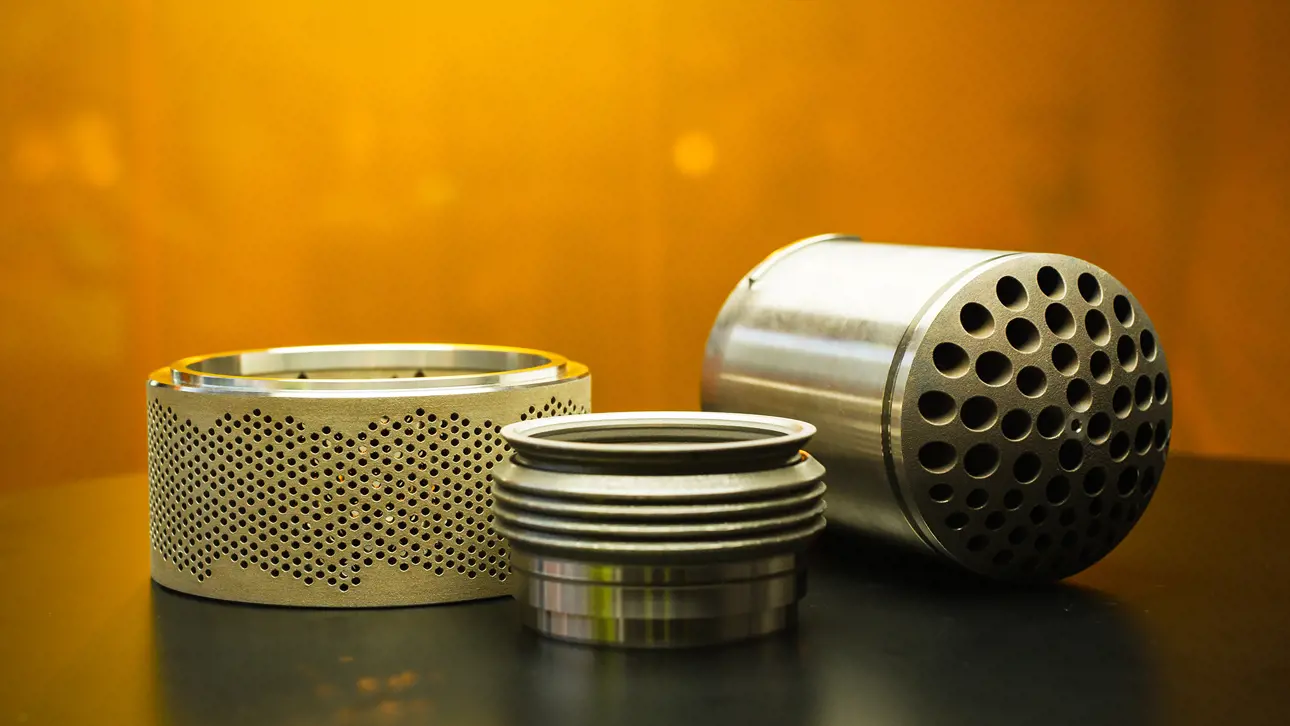3D printing adds real value
Has 3D printing past the innovation phase? Absolutely, according to Jukka Borgman (Director, Technology Development) who says it is already being used to good effect in Neles' valves.

Just a few years’ ago, it seemed as if everyone was hyping up 3D Printing and Additive Manufacture. Now, however, the talk seems to have died down somewhat. But that does not mean that 3D printing will soon be a forgotten technology. Quite the opposite, according to Jukka Borgman.
3D printing can improve valve performance, reduce noise and deliver optimised solutions for customers’ unique applications.
“I would not say that 3D printing is a mature technology but it has certainly past the innovation stage. In fact 3D printing is already being used as a valuable manufacturing technique by Neles and many other companies from all branches of industry. We see it as a robust and reliable production process that is ideal for small, complex shapes. Consider noise attenuation trims where 3D technology means you can design parts that deliver superior performance than conventionally-produced trims.” Adding weight to his words, Borgman pulls out two sample attenuation trims. “Look at the standard trim first where regularly-sized channels have been drilled straight through the material. Now check the 3D printed part, where you can see how each channel starts out fairly large on the inside, then splits into several pathways with increasingly smaller diameters inside the trim before emerging as multiple small holes on the outside. And yes, you could produce such a complex part using conventional manufacturing techniques but that would be so much more complicated and expensive than a 3D production route.”
Optimized flow paths
In short, 3D technology gives designers much more freedom to optimize the flow path inside the valve, says Borgman. And the benefits don’t just stop there, he continues. “Advantages with 3D printing include the fact that you no longer need to first make tools, racks or frames etc. So 3D printing is a very versatile technique for quickly and inexpensively producing small series components.”
3D printing also brings down production times he adds. “A standard production route may involve multiple stages that can incur delays. By contrast, a 3D printer can effectively perform several jobs at once. For example, this attenuation ring was produced in just 24 hours after which limited final machining was required which added on just an extra day. So 3D printing is ideal for valve manufacture as well as for the rapid production of spare parts.” Despite his enthusiasm, Borgman does not see 3D printing completely replacing traditional manufacturing processes just yet. “Neles has been following and trialling 3D printing for many years and we expect it will become increasingly used in mainstream valve manufacture. However, I do not envisage 3D replacing casting and machining which are very mature, efficient and proven technologies, especially for large sizes and volumes, such as valve bodies.”
Asked about any hurdles yet to be overcome as regards 3D printing, Borgman notes that as yet there are no standards that cover 3D printing of components designed to contain pressures, such as valve bodies. “Apart from that I can only think of the high cost of 3D printing machine time and the higher cost of the raw materials, which makes 3D printing unattractive for simple components. There are certainly enough materials options, as we can now produce components in stainless steels, titanium, Inconel, etc. And as this sample shows, 3D printing can deliver homogenous materials with a surface finish that needs no further treatment.” Borgman concludes by saying that 3D printed parts will become accepted practice in the valve industry. “Neles currently outsource our 3D printed parts but as and when volumes pick up there will be more incentive to start in-house production. Then we can really show customers how 3D printing can improve valve performance, reduce noise and deliver optimised solutions for their unique applications.”
Written by David Sear. For additional information, please contact tommi.bergstrom@valmet.com
Article originally published as 'Top of mind' story in Valve World September 2019 issue.
Text originally published in 2019, and slightly updated in April 2022, due to the company name change to Valmet. As of the 1st of April 2022, Neles is now Valmet Flow Control business line.

Subscribe to our newsletter
Subscribe now to flow control newsletter and receive the latest insights directly to your email.
SubscribeRead more about 3D printing and innovation

